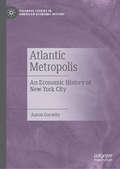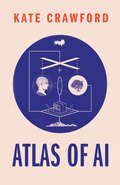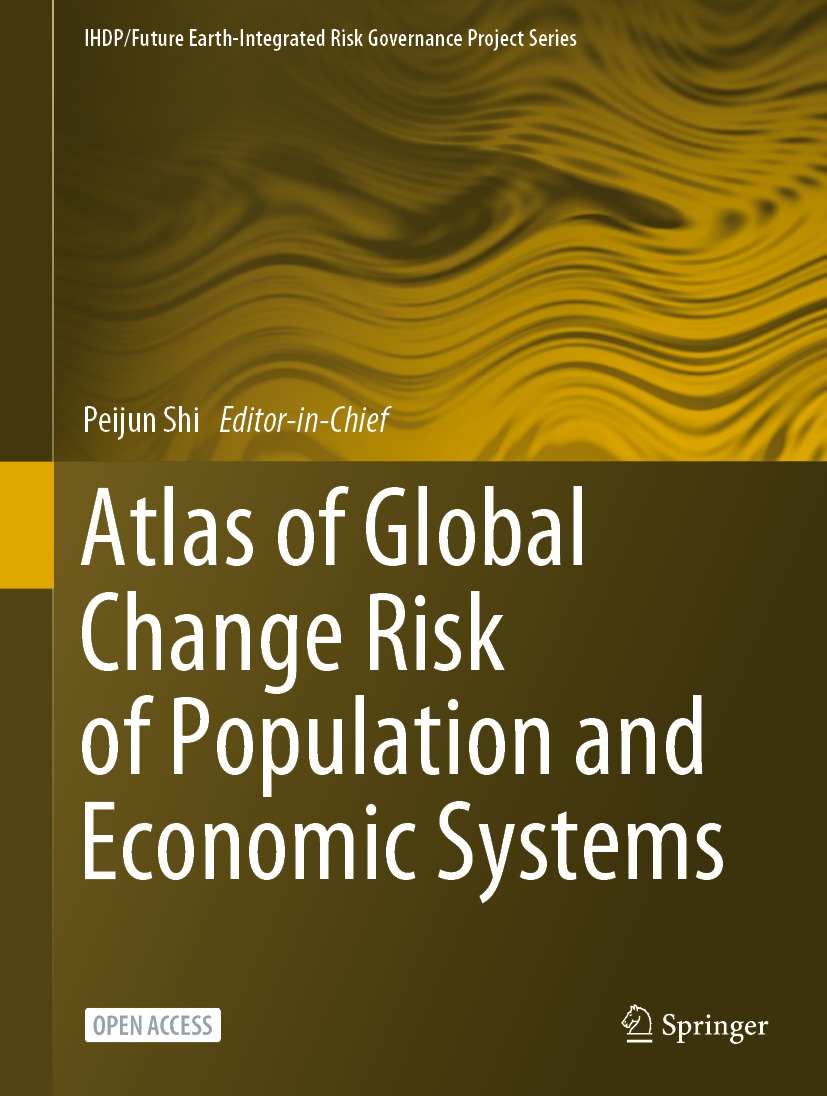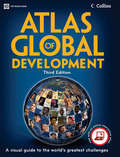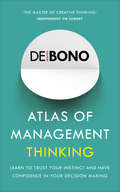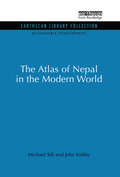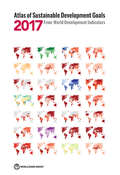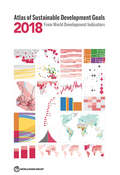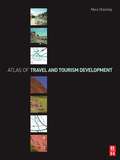- Table View
- List View
Athletic Brewing Company: Crafting the U.S. Non-Alcoholic Beer Category
by Ayelet Israeli Anne V. WilsonAthletic Brewing Company ("Athletic," for short) was founded by Bill Shufelt and John Walker in 2017. In creating Athletic, Shufelt and Walker opened the first U.S. brewery and taproom fully devoted to the production of non-alcoholic (NA) craft beer. By 2021, Athletic was generating around $15 million in annual revenue, and struggling to keep up with consumer demand. Athletic's success was notable in light of long-standing stigmas associated with drinking non-alcoholic beer, particularly in U.S. markets. For example, there was a historical societal stigma surrounding non-alcoholic beer as a result of assumptions that people who chose not to drink alcohol are abstaining because of a problematic relationship with alcohol. Athletic overcame this barrier, and found early success, by specifically addressing the needs of athletes who wanted to enjoy a great beer and be included in the social ritual of drinking without compromising their athletic performance. However, Athletic's success was also part of a larger cultural shift and increased receptivity to non-alcoholic beer in the U.S., which subsequently attracted stiff competition from both small and large brewers who created their own non-alcoholic offerings. Can Athletic continue its upward trajectory or will it be squeezed out by competitors? Will the bubbling embrace of non-alcoholic beer in the U.S. become mainstream or will it prove to be a passing fad?
Atlanta Pop in the '50s, '60s & '70s: The Magic of Bill Lowery
by Andy Lee White Williams M JohnDiscover the people and places that made Atlanta the pop music capital of the United States in the second half of the twentieth century.Former DJ Bill Lowery attracted a galaxy of talent and created an empire of music publishing, production and promotion. In 1956, the Lowery Music Company had its first million copy-selling hit single with &“Be-Bop-a-Lula,&” by Gene Vincent. Under Lowery&’s direction, popular artists like Tommy Roe and Billy Joe Royal flourished. Audio engineer Rodney Mills teamed up with Lowery and future Atlanta Rhythm Section manager Buddy Buie to build Studio One, a recording studio that produced albums from legendary acts such as Joe South, Lynyrd Skynyrd, 38 Special and others. Andy Lee White and John M. Williams offer a comprehensive portrait of the vibrant postwar Atlanta music scene.&“Insight and memories from major behind the scenes figures like engineer, producer and Georgia Music Hall of Fame member, Rodney Mills (Lynyrd Skynyrd, Atlanta Rhythm Section, Gregg Almond, Joe South) along with Bob &“Tub&” Langford (engineer for Joe South&’s biggest hits and Lynyrd Skynyrd&’s &“Freebird&”) help tell previously untold memories from a special time for Atlanta music like none before or since.&” —East Cobber
Atlanta Record Stores: An Oral History
by Chad RadfordAtlanta Record Stores is an oral history of the city's rock music scene, as witnessed through the lens of Criminal Records, Fantasyland, Wax 'N' Facts, and many more. This is a rock-centric take on a town that's so often praised and admired around the world as a hip-hop mecca. Here, the secret history of the underdogs--outsiders living among outsiders--are told. From Jarboe of SWANS to William DuVall of Alice In Chains and Neon Christ, to Kelly Hogan, and those surly guys behind the counter at Wuxtry, all were drawn by the irresistible lure of vinyl records, all found their communities and their own identities, leaving an indelible mark on the culture of Atlanta. Now, in their own voices, their stories are told.
Atlanta Schools: Measures to Improve Performance
by Natalie Kindred Robert L. SimonsThe widespread cheating scandal that rocked the Atlanta public school system in 2010 and 2011 illustrates how high-stakes performance pressure, without sufficient risk controls, can drive dangerous behavior. After becoming superintendent of the low-income and academically struggling Atlanta, Georgia school system in 1999, Beverly Hall implemented new measurement systems-many of them derived from business best practices-to motivate and evaluate the performance of teachers and principals. Educators whose students performed well on standardized tests received bonuses and public recognition; educators whose students fell short received reprimands, warnings, and eventually termination. With so much riding on "meeting the numbers," teachers and principals began taking drastic steps, including collaborating to change students' test answers while intimidating colleagues who threatened to expose the deception. As Atlanta students' (fabricated) test scores soared, leaders in business and politics praised Beverly Hall's data-driven approach for transforming a lagging school system into a model of success. More than a decade into Hall's tenure, multiple investigations finally exposed the scandal in Atlanta-and its terrible impact on the district's students. (For instructors who want to inject some extra energy, and fun, in the classroom, this case study provides material for students to stage skits in front of the class to illustrate how and why the cheating occurred.)
Atlanta’s Olympic Resurgence: How the 1996 Games Revived a Struggling City
by Michael Dobbins Leon S. Eplan Randal RoarkThe summer of 1996. In nineteen days, six million visitors jostled about in a southern city grappling with white flight, urban decay and the stifling legacy of Jim Crow. Six years earlier, a bold, audacious partnership of a strong mayor, enlightened business leaders and Atlanta's Black political leadership dared to bid on hosting the 1996 Olympic Games. Unexpectedly, the city won, an achievement that ignited a loose but robust coalition that worked collectively, if sometimes contentiously, to prepare the city and push it forward. This is a story of how once-struggling Atlanta leveraged the benefits of the Centennial Games to become a city of international prominence. This improbable rise from the ashes is told by three urban planning professionals who were at the center of the story.
Atlantic Computer: A Bundle of Pricing Options
by Neeraj Bharadwaj John B. GordonAtlantic Computer, a leading player in the high-end server market, has detected a marketplace opportunity in the basic server segment. They have developed a new server, the Tronn, to meet the needs of this segment. In addition, they have created a software tool, called the "Performance Enhancing Server Accelerator," or PESA, that allows the Tronn to perform up to four times faster than its standard speed. The central question revolves around how to price the Tronn and PESA. Although cost-plus, competition-based, and status-quo pricing are the most common means by which firms establish prices for their offerings, these approaches may prevent firms from fully realizing the benefits that are due to them. Provides an opportunity to optimize value capture for the firm by utilizing value-in-use pricing (i.e., examining the value that a firm's offering creates for the customer, and using the savings generated as the basis for developing prices). Also allows for the exploration of the challenges surrounding the implementation of a value-in-use pricing strategy. These include the reactions of competitors, customers, and stakeholders within the firm.
Atlantic Computer: A Bundle of Pricing Options
by Neeraj Bharadwaj John B. GordonAtlantic Computer, a leading player in the high-end server market, has detected a marketplace opportunity in the basic server segment. They have developed a new server, the Tronn, to meet the needs of this segment. In addition, they have created a software tool, called the "Performance Enhancing Server Accelerator," or PESA, that allows the Tronn to perform up to four times faster than its standard speed. The central question revolves around how to price the Tronn and PESA. Although cost-plus, competition-based, and status-quo pricing are the most common means by which firms establish prices for their offerings, these approaches may prevent firms from fully realizing the benefits that are due to them. Provides an opportunity to optimize value capture for the firm by utilizing value-in-use pricing (i.e., examining the value that a firm's offering creates for the customer, and using the savings generated as the basis for developing prices). Also allows for the exploration of the challenges surrounding the implementation of a value-in-use pricing strategy. These include the reactions of competitors, customers, and stakeholders within the firm.
Atlantic Computer: A Bundle of Pricing Options
by Neeraj Bharadwaj John B. GordonAtlantic Computer, a leading player in the high-end server market, has detected a marketplace opportunity in the basic server segment. They have developed a new server, the Tronn, to meet the needs of this segment. In addition, they have created a software tool, called the "Performance Enhancing Server Accelerator," or PESA, that allows the Tronn to perform up to four times faster than its standard speed. The central question revolves around how to price the Tronn and PESA. Although cost-plus, competition-based, and status-quo pricing are the most common means by which firms establish prices for their offerings, these approaches may prevent firms from fully realizing the benefits that are due to them. Provides an opportunity to optimize value capture for the firm by utilizing value-in-use pricing (i.e., examining the value that a firm's offering creates for the customer, and using the savings generated as the basis for developing prices). Also allows for the exploration of the challenges surrounding the implementation of a value-in-use pricing strategy. These include the reactions of competitors, customers, and stakeholders within the firm.
Atlantic Corp.
by Peter TufanoTwo forest products manufacturers negotiate the sale of a group of assets. ACRS would allow the buyer to rapidly depreciate the stepped up basis to justify a high valuation. The seller recently paid greenmail, and this transaction may be linked to its desire to avoid paying off a second investor.
Atlantic Corp. (Abridged)
by Thomas R. PiperA major paper company is considering acquiring the assets of a company that is threatened by a hostile takeover. The acquisition can be evaluated in terms of industry attractiveness, comparative advantage, and cash-flow analysis.
Atlantic Metropolis: An Economic History of New York City (Palgrave Studies in American Economic History)
by Aaron GurwitzThis book applies the contents of a working economist’s tool-kit to explain, clearly and intuitively, when and why over the course of four centuries individuals, families, and enterprises decided to locate in or around the lower Hudson River Valley. Collectively those millions of decisions have made New York one of the twenty-first century’s few truly global cities. A recurrent analytic theme of this work is that the ups and downs of New York’s trajectory are best understood in the context of what was happening elsewhere in the broader Atlantic world. Readers will find that the Atlantic perspective viewed through an economic lens goes a long way toward clarifying otherwise quite perplexing historical events and trends.
Atlantis Paradise Island Resort & Casino: Improving Performance with a New Vision and Mission
by Lynda M. Applegate Gabriele PiccoliAtlantis Paradise Island adopted a new vision and mission to provide its guests and employees an enhanced brand experience. The dilemma Atlantis faced was how to integrate the new vision and mission into all the brand touch points in order to improve customer satisfaction and employee engagement.
Atlantis Paradise Island Resort and Casino (B): Improving Performance with New Core Values
by Chekitan S. Dev Lynda M. Applegate Gabriele PiccoliSupplement
Atlas Copco (A): Gaining and Building Distribution Channels
by V. Kasturi RanganAtlas Copco, a Swedish company, holds the highest market share for air compressors worldwide. However, its attempts to enter U.S. markets have been unsuccessful. The case describes a series of strategic distribution maneuvers implemented by the company which enable it to improve market share from about 1% to 10% in ten years. The objective is to gain an understanding of what is involved in building distribution strength.
Atlas Electrica: International Strategy
by Michael E. Porter Arturo CondoAtlas must decide whether to acquire La Indeca, increasing its Central American presence, or to focus on larger Latin American markets where higher growth is possible. In the year 2000, Jorge Rodriguez was in charge of Atlas Electrica, the largest home appliance firm in Central America. Although it had almost doubled its sales in the 1990s, by the end of the decade Atlas was experiencing a declining market share in its home region and facing increasing competition from outside the region, especially from Mexican and Korean multinationals. At the time, Atlas' main competitor in Central America, El Salvador-based Indeca, was up for sale. Atlas Electrica, based in Costa Rica, served more than a dozen Latin American countries. Since its establishment in 1961, it had served Central American markets with different types of home appliances, later focusing on white-goods for middle-income segments of Central American consumers. In the mid-1990s, through a strategic alliance with Sweden's AG Electrolux, Atlas had expanded to Latin American markets beyond Central America.
Atlas of AI: Power, Politics, and the Planetary Costs of Artificial Intelligence
by Kate CrawfordThe hidden costs of artificial intelligence, from natural resources and labor to privacy, equality, and freedom&“Eloquent, clear and profound—this volume is a classic for our times. It draws our attention away from the bright shiny objects of the new colonialism through elucidating the social, material and political dimensions of Artificial Intelligence.&”—Geoffrey C. Bowker, University of California, Irvine What happens when artificial intelligence saturates political life and depletes the planet? How is AI shaping our understanding of ourselves and our societies? In this book Kate Crawford reveals how this planetary network is fueling a shift toward undemocratic governance and increased racial, gender, and economic inequality. Drawing on more than a decade of research, award‑winning science, and technology, Crawford reveals how AI is a technology of extraction: from the energy and minerals needed to build and sustain its infrastructure, to the exploited workers behind &“automated&” services, to the data AI collects from us. Rather than taking a narrow focus on code and algorithms, Crawford offers us a political and a material perspective on what it takes to make artificial intelligence and where it goes wrong. While technical systems present a veneer of objectivity, they are always systems of power. This is an urgent account of what is at stake as technology companies use artificial intelligence to reshape the world.
Atlas of Environmental Risks Facing China Under Climate Change (IHDP/Future Earth-Integrated Risk Governance Project Series)
by Qiuhong Tang Quansheng GeThis atlas provides the most comprehensive and accurate overview of environmental risks relating to climate change vulnerability and adaptation in China. It addresses the agricultural, ecosystem and heat wave health risk posed by climate change and presents the projected environmental risks in the 21st century under climate change and socioeconomic scenarios. The detailed and concise risk assessments are mapped in grid units, allowing easy environmental risk assessment for specific locations. The atlas contributes significantly to the knowledge base for climate change adaptation in China and is a valuable resource for students and professionals in the fields of geographic sciences and climate change.
Atlas of Global Change Risk of Population and Economic Systems (IHDP/Future Earth-Integrated Risk Governance Project Series)
by Peijun ShiThis book is open access and illustrates the spatial distribution of the global change risk of population and economic systems with the maps of environment, global climate change, global population and economic systems, and global change risk. The risks of global change are mapped at 0.25 degree grid unit. The risk results and their contribution rates of the world at national level are unprecedentedly derived and ranked. The book can be a good reference for researchers and students in the field of global climate change and natural disaster risk management, as well as risk managers and enterpriser to understand the global change risk of population and economic systems.
Atlas of Global Development
by The World BankPublished in association with Harper Collins, the completely revised and updated third edition of the Atlas of Global Development vividly illustrates the key development challenges facing our world today. 'This is an excellent, up-to-date source book which will be invaluable for students of, and staff teaching, higher levels of geography .... a clear, concise, easily-accessible and well-illustrated volume.' - Geographical Association, United Kingdom
Atlas of Management Thinking
by Edward de BonoFirst published in 1981, this was the first book ever to be written explicitly for the right side of the reader’s brain. Much has been made of the research conducted into the left side of the brain – home to language and logic. The right side works in images, whole patterns and undefined feelings – none of which can be verbalized. This more elusive thinking often functions as what is loosely called ‘intuition’. In Atlas, de Bono shows us how to use the right side. It is an atlas because it is a visual reference of images and illustrations that point the reader in the right direction (literally). For anyone who has ever been told to trust their instinct, or who is concerned with management and decision-making, this book is a de Bono classic.
Atlas of Nepal in the Modern World: Atlas Of Nepal In The Modern World (Sustainable Development Set)
by Michael SillNepal is associated, in most people's imagination, with Everest (Sagarmatha to the Nepalese), vivid plants and picturesque villages and people. The truth, as always, is other. It is one of the poorest countries in the world, surrounded by big and powerful neighbours. It is immensely diverse, ranging from the great mountains to the north through the trans-Himalaya, a high barren plateau, through the deep valleys, which include the one which contains the ancient cities of Kathmandu, Patan and Bhaktapur, to the Terai which is an extension of Ganges plain. This atlas describes not only the complexity of the environment, but the people, the languages, the towns and industries, the agriculture, food and land management, the natural resources, the effects of tourism, sources of energy, transport and education policies. Originally published in 1991
Atlas of Sustainable Development Goals 2017: From World Development Indicators
by World BankThe Atlas of Sustainable Development Goals 2017 uses maps, charts and analysis to illustrate, trends, challenges and measurement issues related to each of the 17 Sustainable Development Goals. The Atlas primarily draws on World Development Indicators (WDI) - the World Bank's compilation of internationally comparable statistics about global development and the quality of people's lives Given the breadth and scope of the SDGs, the editors have been selective, emphasizing issues considered important by experts in the World Bank's Global Practices and Cross Cutting Solution Areas. Nevertheless, The Atlas aims to reflect the breadth of the Goals themselves and presents national and regional trends and snapshots of progress towards the UN's seventeen Sustainable Development Goals: poverty, hunger, health, education, gender, water, energy, jobs, infrastructure, inequalities, cities, consumption, climate, oceans, the environment, peace, institutions, and partnerships. Between 1990 and 2013, nearly one billion people were raised out of extreme poverty. Its elimination is now a realistic prospect, although this will require both sustained growth and reduced inequality. Even then, gender inequalities continue to hold back human potential. Undernourishment and stunting have nearly halved since 1990, despite increasing food loss, while the burden of infectious disease has also declined. Access to water has expanded, but progress on sanitation has been slower. For too many people, access to healthcare and education still depends on personal financial means. To date the environmental cost of growth has been high. Accumulated damage to oceanic and terrestrial ecosystems is considerable. But hopeful signs exist: while greenhouse gas emissions are at record levels, so too is renewable energy investment. While physical infrastructure continues to expand, so too does population, so that urban housing and rural access to roads remain a challenge, particularly in Sub-Saharan Africa. Meanwhile the institutional infrastructure of development strengthens, with more reliable government budgeting and foreign direct investment recovering from a post-financial crisis decline. Official development assistance, however, continues to fall short of target levels.
Atlas of Sustainable Development Goals 2018: From World Development Indicators (World Bank Atlas)
by World BankThe Atlas of Sustainable Development Goals 2018 is a visual guide to the trends, challenges and measurement issues related to each of the 17 Sustainable Development Goals. The Atlas features maps and data visualizations, primarily drawn from World Development Indicators (WDI) - the World Bank’s compilation of internationally comparable statistics about global development and the quality of people’s lives. Given the breadth and scope of the SDGs, the editors have been selective, emphasizing issues considered important by experts in the World Bank’s Global Practices and Cross Cutting Solution Areas. Nevertheless, The Atlas aims to reflect the breadth of the Goals themselves and presents national and regional trends and snapshots of progress towards the UN’s seventeen Sustainable Development Goals related to: poverty, hunger, health, education, gender, water, energy, jobs, infrastructure, inequalities, cities, consumption, climate, oceans, the environment, peace, institutions, and partnerships.
Atlas of Travel and Tourism Development: Participatory Research For Community-based Natural Resource Management
by Myra ShackleyFrom travel in the ancient and classical world to the growth of underwater tourism in the Great Barrier Reef and the influence of the Gulf War on regional tourism, the Atlas of Travel and Tourism Development is a new departure from conventional texts, providing a unique overview of the growth of the tourism industry.Divided into three sections, the text looks first at the past, examining the influence of global geography on travel patterns, and provides an overview of the history of travel and tourism. It then moves onto the present, using a regional framework to demonstrate how the physical and historical geography of each area is related to tourism development. The final section provides a forecast of future trends for the next two decades.




